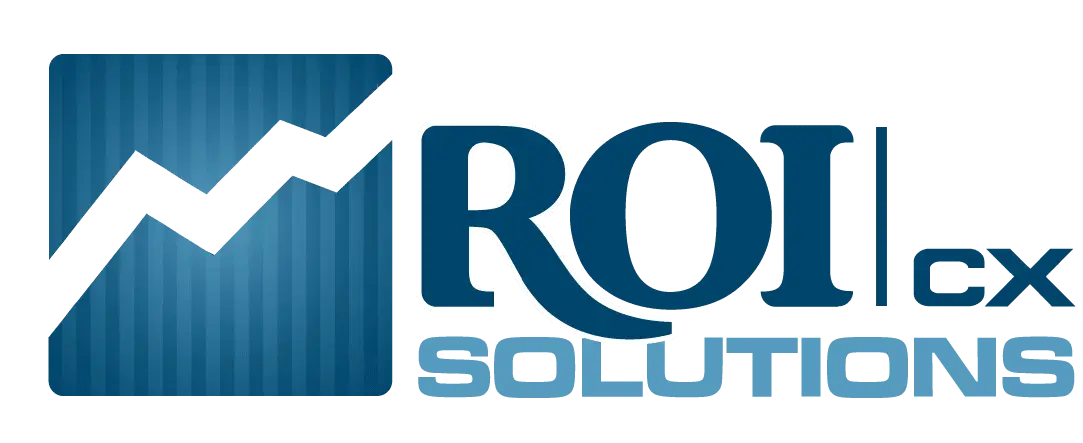How Is Service Level Calculated in a Call Center? 3 Methods to Know
Table of Contents
- What Is the Purpose of Service Levels?
- What Is Service Level in Call Centers?
- How to Calculate Service Level in a Call Center
- Ways to Calculate Call Center Service Level Standards
- Benefits of Tracking Service Levels With ROI CX Solutions
- What Is a Good Service Level for a Call Center?
- How Do You Maintain Service Levels in a Call Center?
- Challenges in Maintaining Call Center Service Levels
- Learn More From ROI CX Solutions
Introduction
Your customers deserve top-tier service on all fronts, and partnering with a call center can simplify the process. When using this resource, you’ll also want to measure your call center’s performance to monitor performance, which is crucial and more accessible than you think. So, how does service level calculation work in a call center? Here’s what you need to know.
Time to read: 7 minutes
Key Takeaways
- What Is Call Center Service Level? Call center service level measures the percentage of calls answered within a specific timeframe.
- Understanding SLAs: A typical Service Level Agreement (SLA aims to answer 80% of calls within 20 seconds. Clear SLAs align call center performance with customer expectations and organizational goals.
- How to Calculate Service Level: Divide the number of calls answered within a specific timeframe by the total number of calls, then multiply by 100. This service level formula helps assess service performance and quality.
- Maintaining High Service Levels: Uphold service standards by efficiently scheduling agents, reducing turnover rates, and boosting customer satisfaction. Successful tactics are key to delivering steady, top-notch service that’s fundamental to customer loyalty.
What Is the Purpose of Service Levels?
Call center service level metrics are critical gauges for staffing your call center. They assess connection as well as resolution speed. These indicators help manage changes in the number of calls, improve customer satisfaction, and increase overall efficiency.
What Is Service Level in Call Centers?
Service level is an indicator that qualifies the percentage of incoming calls answered within a specific time frame. Higher service levels reduce wait times, elevate customer satisfaction, and improve company relations. A call center with higher percentages indicates superior service and weighs your team’s effectiveness.
Call Center Service Level Agreement (SLA)
Call center service level agreements (SLAs) are beneficial for measuring the efficiency of customer interactions. An SLA generally aims to answer 80% of calls within 20 seconds, demonstrating a commitment to prompt and reliable service. To set effective SLAs, create clear criteria for categorizing abandoned calls and align goals with organizational objectives and customer expectations. Adhering to these standards ensures your call center meets and exceeds service level expectations.
How to Calculate Service Level in a Call Center
Service level calculation is relatively simple. First, count the number of calls answered within a specific time frame, ranging from 10 seconds to a full minute. Next, divide the number of calls answered within this period by the total number of incoming calls, then multiply by 100 to get the service level percentage. This metric is necessary for assessing your customer service efficiency and quality.
Example: If your target is to answer calls within 20 seconds and your call center handles 500 calls daily, with 425 answered within 20 seconds, the service level formula is:
425 calls answered within 20 seconds / 500 total calls = 0.85 X 100 = 85% service level
This means 85% of calls were answered within your target time frame, indicating a strong service level.
Ready to take your business to the next level? Let our call center experts show you how we've helped organizations just like yours seamlessly scale while lowering costs and increasing efficiencies.
You won't regret it.
Ways to Calculate Call Center Service Level Standards
While it’s easy to determine your call center service level, really understanding what your agents and systems can do means you’ll need to use three different methods to monitor your call center’s performance.
1. The 80/20 Rule
The 80/20 rule is used as a benchmark in call center operations, meaning 80% of calls are answered within 20 seconds. While effective, this metric doesn’t account for customer satisfaction ratings, wait times, and call abandonment rates.
2. Counting Abandoned Calls
Tracking abandoned calls is imperative for stellar call center service levels. Each abandoned call is a missed opportunity to connect and gauge customer satisfaction. High abandoned call rates show a need to improve your strategy, which is why it’s crucial to analyze these numbers and make adjustments as needed to raise service quality.
3. Look at Your FCR
Beyond response times, First Contact Resolution (FCR) is an important metric for determining your overall call center service level. FCR is the percentage of customer issues resolved on the initial call, eliminating the need for follow-ups. An FCR rate between 70-75% is generally solid across industries. The formula for this is to divide the number of first call resolutions by the total number of calls.
Service level in a call center is a percentage that reflects operational performance over a specific time frame. Standard calculations include the proportion of calls answered, response speed, and call time. Service levels are useful for forecasting, staffing, and scheduling. A high service level shows readiness and availability, while a poor one indicates the need for improvement in customer accessibility.
Benefits of Tracking Service Levels With ROI CX Solutions
Maintaining high service levels in a call center is essential for customer satisfaction and operational efficiency. By accurately measuring and improving service levels in call centers, businesses can reduce wait times, handle calls more effectively, and enhance overall customer experience.
Tracking service levels with ROI CX Solutions provides the insights and tools to optimize your call center’s performance, ensuring your team consistently meets and exceeds customer expectations. Partner with ROI CX Solutions to elevate your service standards and drive unparalleled customer satisfaction. Reach out today to take your call center to the next level.
What Is a Good Service Level for a Call Center?
A Service Level Objective (SLO) helps call centers measure their service level, with the common 80/20 rule suggesting that 80% of calls should be answered within 20 seconds. However, call center service level standards vary, and many call centers aim to exceed these norms to stand out in customer service. Some may choose a more lenient approach, accepting longer wait times to reduce costs by needing fewer agents.
How Do You Maintain Service Levels in a Call Center?
Achieving and surpassing the desired service level in a call center relies on having enough agents available to manage incoming calls promptly. This presents a challenge for business owners, as the capacity to respond to customer service calls is limited by staff numbers. On the other hand, expanding your team to improve service levels can add significant financial costs. Here are some strategies to elevate your call center’s service levels.

1. Optimal Agent Scheduling
Securing the ideal number of agents is essential. Call centers can align their staffing with demand by evaluating call volume patterns, assessing agent efficacy, and accounting for training and breaks.
2. Reduce Agent Turnover
High turnover rates can undermine service levels. By addressing the root causes of attrition, call centers can improve efficiency and save on costs.
3. Increase Customer Satisfaction
Dissatisfied customers often require longer calls or multiple contacts, affecting call center service levels. Call centers can boost customer satisfaction by allocating resources to improve average handling time and manage call volume effectively. When used properly, these methods can lead to more efficient operations and ensure the call center staff exceeds your customer’s expectations.
Challenges in Maintaining Call Center Service Levels
Maintaining a call center’s service levels means overcoming challenges like inconsistent call volumes, staffing issues, agent training, outdated technology, and system outages. Using predictive analytics, workforce management tools, continuous training, technology upgrades, and robust backup systems can help your contact center ensure consistent, high-quality customer service. Here’s how:
- Call Volume: Variability in call volume disrupts service levels, leading to longer wait times during peak periods. Predictive analytics can anticipate fluctuations and assign resources more effectively.
- Outdated Technology: Relying on outdated systems hampers efficiency and responsiveness. Investing in modern technology enhances performance, streamlines operations, and supports seamless customer interactions.
- Staffing: Satisfactory staffing levels are necessary yet often challenging due to unexpected absences or demand surges. Workforce management tools can optimize scheduling and improve service consistency.
- System Outages: Unplanned outages disrupt service delivery and lower customer experiences. Establishing robust backup systems and regular maintenance schedules can mitigate downtime and ensure continuity.
- Training: Inadequate training results in longer call handling times and reduced customer satisfaction. Continuous education keeps agents skilled and knowledgeable about evolving products and services.
Learn More From ROI CX Solutions
Now that you have a solid understanding of the definition of call center service levels, you can apply the principles to maintain them better and improve your service levels. Of course, one way to improve service levels is to let the experts handle it. ROI CX Solutions has years of experience representing countless brands with omnichannel customer support, and we can do the same for you.
Want to learn more about call center service levels? Contact ROI CX Solutions today to see how service levels can positively impact your call center or how outsourcing to ROI CX Solutions can improve your performance.


![The Ultimate TCPA Compliance Checklist [A Step-by-Step Guide]](https://roicallcentersolutions.com/wp-content/uploads/2024/11/Image-1-shutterstock_2497397155-scaled-500x383.jpg)



